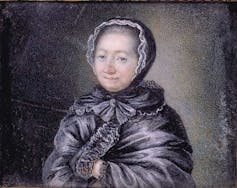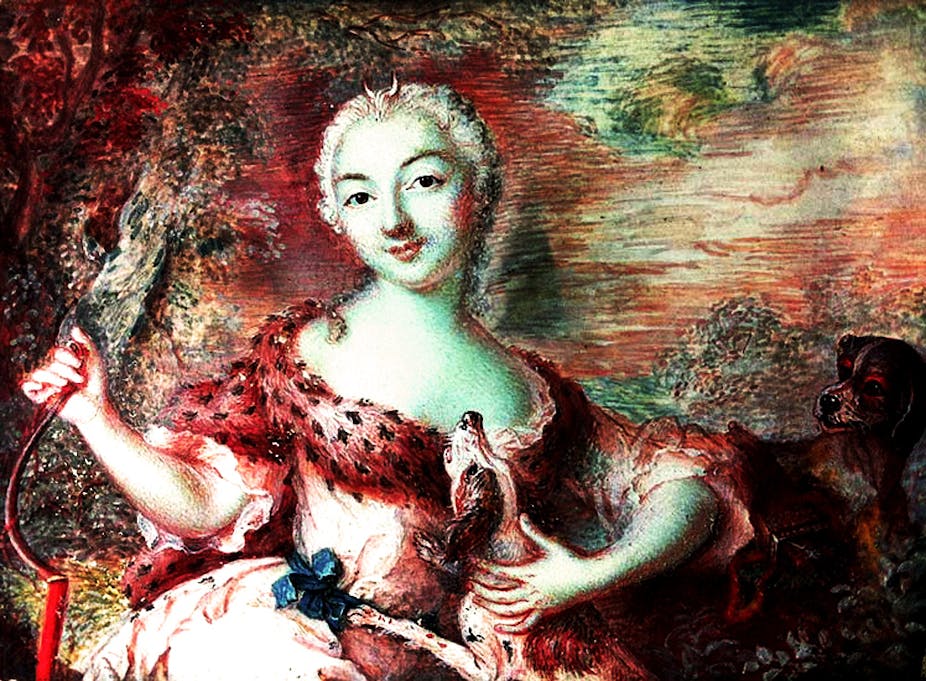Though it is more commonly known these days for its part in the Disney Princess franchise, Beauty and the Beast is an enduring tale which has sparked film adaptations and novelisations across centuries. Though originally published in 1740 by Gabrielle-Suzanne Barbot de Villeneuve, the most famous version of the tale, La Belle et la Bête, was produced by French writer Jeanne-Marie le Prince de Beaumont in the 1750s.

De Beaumont published approximately 70 volumes during her literary career and was celebrated as a writer of fairy tales. But rather than just fantasy or fable, her rendering of Beauty and the Beast is actually more a critique of women’s rights of the time, hidden behind layers of marital guidance.
Surprising though it may seem – more modernly, some have interpreted Beauty and the Beast as a tale of Stockholm Syndrome rather than romance – when you look at de Beaumont’s other work it makes sense.
The original Belle
Before her Beauty adaptation, the writer translated the tragic tale of Madame de Ganges, based on the real-life tragic history of Diane-Elisabeth de Rossan. The protagonist has an unfortunate story: a wealthy, beautiful and virtuous young woman remarries after becoming widowed. She makes a poor choice, however, and marries a jealous husband with two villainous brothers, both of whom fall in love with her. When neither succeeds in corrupting her virtue, their anger is so great that they decide to murder her – with the endorsement of her husband.
The heroine is ordered to choose the method of her own death: poison, stabbing or shooting. But in a twist in the tale, Madame de Ganges ends up the victim of all three: she is not only forced to swallow the poison, but when she attempts to escape, she is stabbed by one of the brothers, and shot. Ultimately, it is the poison which finishes her off: details of the character’s autopsy in a later translated version reveal that it had “burnt the coats of her stomach, and turned her brain quite black”. The beauty of the young woman was transmuted into the beast of a blackened husk.

Interestingly, in de Beaumont’s version of Madame de Ganges’s tale, written as a moral for young women, she seemingly attributes some culpability to the Marchioness in her own downfall. Her husband’s jealousy arises because she “gad[s] about so much”, enjoying being admired for her beauty. This incurs the wrath of her jealous husband who chides her “to stay more at home”.
But de Beaumont almost seems dissatisfied with concluding that Madame de Ganges should have complied with her husband because “lions and tygers are tamed at last; a man must be of a fiercer nature than those animals, not to be gained by a complying, prudent, and discreet wife”. And so she rewrote the tale again, this time as a fairy tale: Beauty and the Beast.
Beauty’s judicious choices
In this version, the “Beauty” is distinctly comparable to the too-beautiful Madame de Ganges. Like the Marchioness, Beauty willingly goes to, but then is forced to submit to the will of a ferocious beast. Unlike the Marchioness, however, Beauty is able to tame the beast by being a “complying, prudent, and discreet wife”, and effect the beast’s transformation into a prince.
It is the conclusion of the tale which is most interesting in de Beaumont’s version, for it is here that she hints at the unsatisfactory nature of the place of women in her society and uses her story as feminist critique. Beauty, the youngest of three sisters, is portrayed as “a charming, sweet-tempered creature” who loved the Beast even though his deformity scares her. Her sisters, on the other hand, are proud and wealthy and refuse to marry anyone less than a duke or earl. The “wicked creatures” are so cruel to Beauty that they rub onions into their eyes to feign crying when she leaves their family home to live in the Beast’s castle.
Beauty, (said this lady,) come and receive the reward of your judicious choice; you have preferred virtue before either wit or beauty, and deserve to find a person in whom all these qualifications are united: you are going to be a great Queen; I hope the throne will not lessen your virtue, or make you forget yourself.
As to you, ladies, (said the fairy to Beauty’s two sisters) I know your hearts, and all the malice they contain: become two statues; but, under this transformation, still retain your reason.
During de Beaumont’s time, “couverture” was law for women, meaning that, in Anne Mellor’s words, “all women were legally ‘covered over’ or absorbed into the body of their husbands, fathers, brothers, or sons”. She might yet still retain … reason, but she is as a statue, effectively silenced and unable to act for herself".
The writer seems to be implying, that for the majority of women in the 18th century marriage market, there was little potential for “happy ever afters”, and only the exercise of “judicious choice” would ensure the attainment of one. For Beauty’s sisters, they chose to value wealth and status above all else, making them beasts within and ultimately becoming their downfall.
Like de Beaumont’s Beauty, Emma Watson’s new iteration has become one that reflects the rights and powers of women – but the feminist aspects of the tale really are as old as time. De Beaumont wanted to teach women then that they have more value than just as a wife, and it is a lesson that rings true nearly 300 years on – though now a woman’s “judicious choices” can give far more freedom than an 18th-century Beauty could ever imagine.

